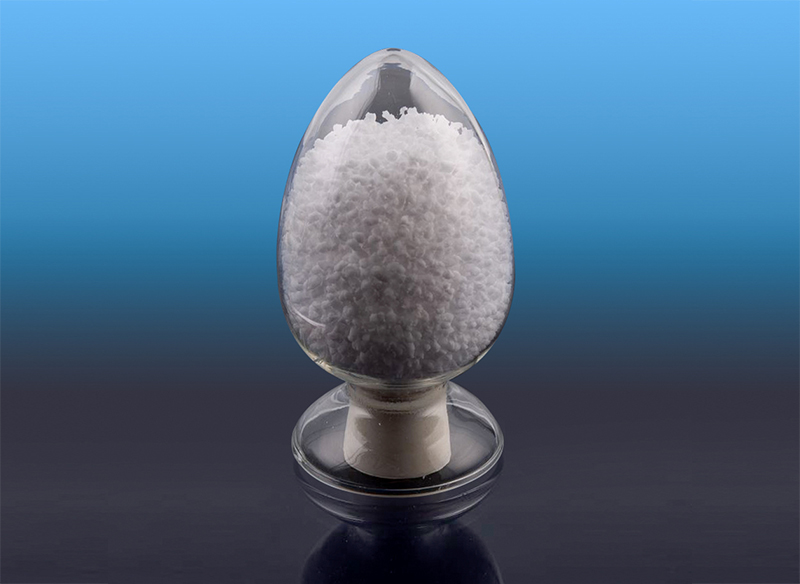How resistant are Styrene-Butadiene Block Copolymer to UV exposure, oxidation, and environmental degradation?
Styrene-Butadiene Block Copolymers (SBCs) are widely used in various industries due to their excellent mechanical properties, such as flexibility, elasticity, and processability. However, like many polymers, SBCs are susceptible to UV exposure , oxidation , and environmental degradation over time. Below is a detailed analysis of their resistance to these factors and strategies to mitigate degradation:
1. UV Exposure
Susceptibility :
The butadiene blocks in SBCs are particularly vulnerable to UV radiation because they contain unsaturated double bonds, which can absorb UV light and undergo photochemical reactions. This leads to chain scission, discoloration, and embrittlement.
Prolonged UV exposure can cause the material to lose its elasticity, become brittle, and develop surface cracks.
Mitigation Strategies :
UV Stabilizers : Additives such as hindered amine light stabilizers (HALS) or UV absorbers (e.g., benzophenones, benzotriazoles) can be incorporated into SBC formulations to absorb or neutralize UV radiation, preventing degradation.
Pigmentation : Adding pigments like carbon black or titanium dioxide can enhance UV resistance by shielding the polymer from direct exposure.
Coatings : Applying protective coatings, such as acrylic or polyurethane-based layers, can act as a barrier against UV radiation.
2. Oxidation
Susceptibility :
Oxidation occurs when SBCs are exposed to oxygen, especially at elevated temperatures or under prolonged stress. The butadiene segments are again the most vulnerable, as their unsaturated bonds react with oxygen to form peroxides, hydroperoxides, and other oxidative byproducts.
Oxidation leads to chain scission , crosslinking , and the formation of carbonyl groups, resulting in reduced mechanical properties, discoloration, and brittleness.
Mitigation Strategies :
Antioxidants : Primary antioxidants (e.g., hindered phenols) and secondary antioxidants (e.g., phosphites, thioesters) are commonly added to SBC formulations to inhibit oxidation. These additives work by scavenging free radicals and decomposing hydroperoxides.
Encapsulation : Encapsulating the polymer in a protective layer or blending it with more oxidation-resistant materials can reduce exposure to oxygen.
Reduced Processing Temperatures : Minimizing high-temperature processing during manufacturing can reduce thermal oxidation.
3. Environmental Degradation
Factors Contributing to Degradation :
Moisture : While SBCs generally have good moisture resistance, prolonged exposure to water or humid environments can lead to plasticizer leaching or swelling, affecting mechanical properties.
Ozone : Ozone in the environment can attack the unsaturated bonds in the butadiene segments, causing cracking and loss of elasticity.
Temperature Extremes : High temperatures accelerate oxidation and softening, while low temperatures can make the material more brittle.
Microbial Attack : Although SBCs are not inherently biodegradable, certain grades may be susceptible to microbial growth if they contain organic additives or contaminants.
Mitigation Strategies :
Ozone Resistance : Incorporating antiozonants (e.g., waxes or chemical inhibitors) can protect the polymer from ozone-induced cracking.
Hydrophobic Additives : Using hydrophobic additives or coatings can improve moisture resistance.
Thermal Stabilizers : Thermal stabilizers can be added to prevent degradation at high temperatures.
Blending with Other Polymers : Blending SBCs with more environmentally resistant polymers (e.g., polypropylene or polystyrene) can improve overall durability.

4. Long-Term Performance in Outdoor Applications
Challenges :
When used in outdoor applications (e.g., roofing membranes, automotive parts, footwear), SBCs face combined exposure to UV radiation, oxygen, moisture, and temperature fluctuations. This accelerates degradation unless proper measures are taken.
Enhancements for Outdoor Use :
Weathering Additives : Combining UV stabilizers, antioxidants, and antiozonants can significantly extend the lifespan of SBCs in outdoor environments.
Surface Treatments : Applying weather-resistant coatings or laminates can provide an additional layer of protection.
Modified Grades : Some manufacturers produce specialized grades of SBCs with enhanced weathering resistance for outdoor applications.
5. Comparison with Other Polymers
Relative Resistance :
Compared to fully saturated polymers like polyethylene (PE) or polypropylene (PP) , SBCs are less resistant to UV and oxidation due to the presence of unsaturated bonds in the butadiene segments.
However, SBCs outperform some elastomers (e.g., natural rubber) in terms of processability and versatility, making them a preferred choice for many applications despite their susceptibility to environmental factors.
6. Testing and Evaluation
Accelerated Weathering Tests :
QUV Testing : Simulates long-term UV exposure using controlled UV light sources to evaluate color change, gloss reduction, and mechanical property degradation.
Oven Aging : Assesses oxidation resistance by exposing samples to elevated temperatures over time.
Ozone Chamber Testing : Measures resistance to ozone-induced cracking.
Field Testing :
Real-world exposure tests in different climates provide insights into how SBCs perform under actual environmental conditions.
7. Sustainable Alternatives
Bio-Based SBCs :
Research is ongoing to develop bio-based or partially renewable SBCs that maintain performance while reducing environmental impact.
Recyclability :
Some SBCs are recyclable, allowing degraded materials to be repurposed into lower-performance applications, thereby extending their lifecycle.





